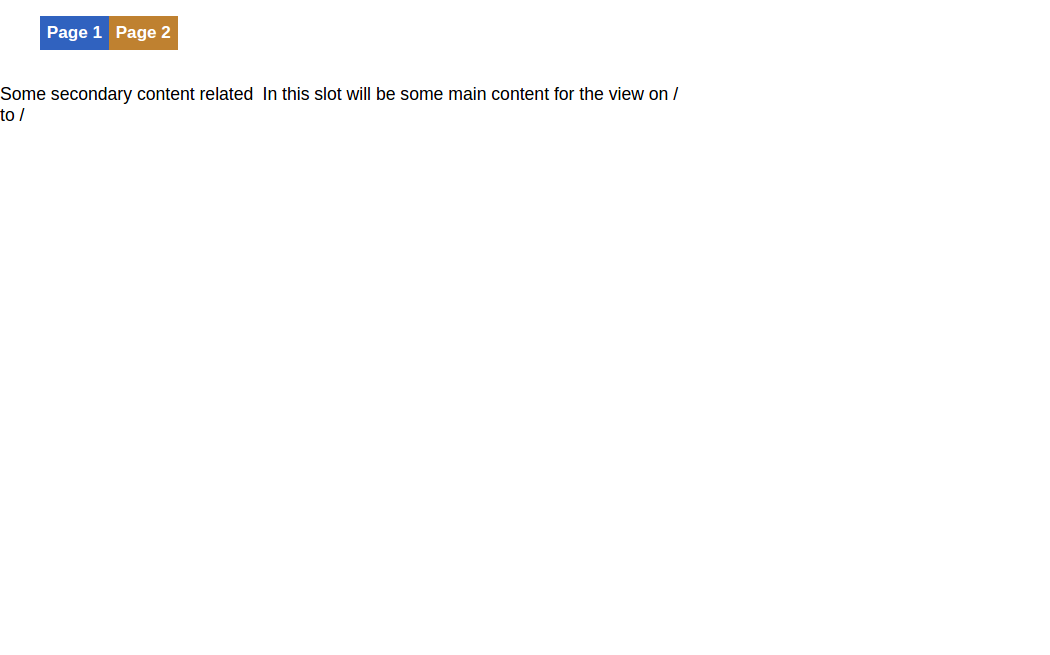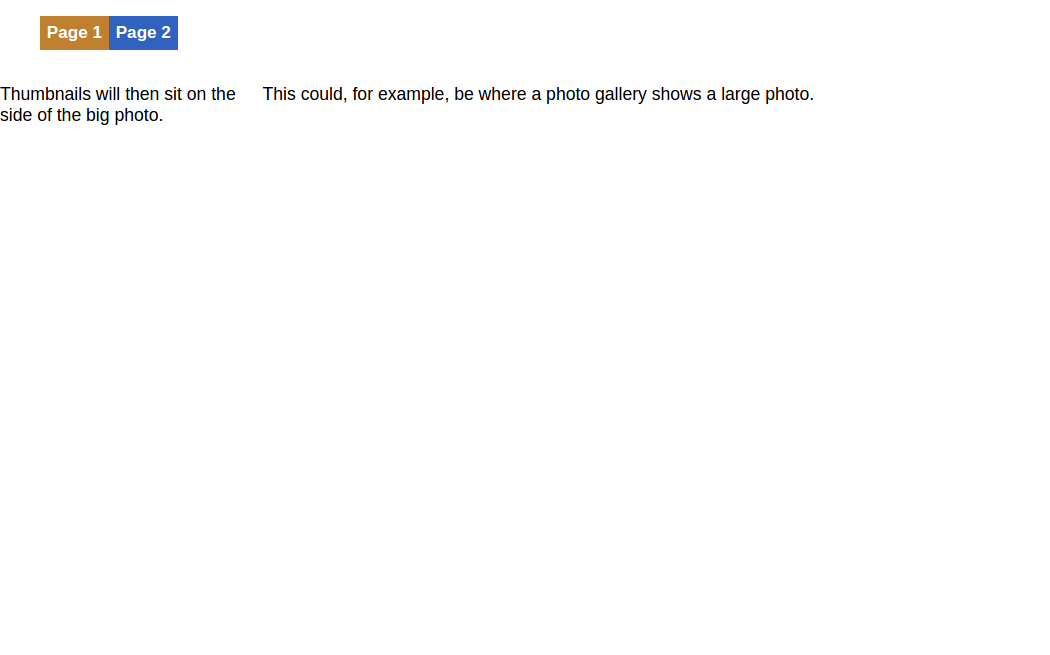Make light work of similar-looking pages¶
There are common user interface elements present on all the different
URLs of a web application. Our previous example is the first one with more
than one page. We dealt with the commonality between its pages by
having a common class (AddressBookPage) from which the page used by
each View inherit all the common elements.
In a large UserInterface it becomes cumbersome to do what we’ve done
with AddressBookPage. Moreover, what we did also hard-codes the main
layout (and usually, look) used for your application in the code of
the UserInterface. As you will learn later on, it is also
possible to re-use other pre-existing UserInterfaces as
part of your web application.
If you intend for a UserInterface to be re-usable in different web
applications, each with its own look and main layout, you cannot
hard-code what the final web page will look like.
Slots and Views without pages¶
For all these reasons, there’s another way to deal with many pages that look similar:
You can attach a page to the entire UserInterface instead of to each individual
View inside it. Then you only need to specify as part of each View
what that View adds to the page.
To make this possible, there is a special Widget, Slot. On its own, a Slot
does not render anything at all on the page it is a part of. It represents an empty area, the contents of which is meant to
be supplied by a View. The View then “plugs” only the bit of content
specific to it into the supplied Slot, on the fly.
There can be more than one Slot on a page, and each one of then is referred to individually by name.
See it in action¶
Below is the source code for an application that demonstrates these ideas.
The application has two Views . Its page (a CustomPage) contains
an HMenu (a horizontal menu) which allows one to navigate between the
two Views of the application.
The home page looks as follows:
Notice the two bits of text. Each paragraph was plugged into a
separate Slot of the page.
In “Page 2”, the same page is displayed, but with different
text in those Slots:
from __future__ import print_function, unicode_literals, absolute_import, division
from reahl.web.fw import UserInterface
from reahl.web.ui import HTML5Page, P, Menu, HorizontalLayout
from reahl.web.layout import PageLayout
from reahl.web.pure import ColumnLayout, UnitSize
class MyCustomPage(HTML5Page):
def __init__(self, view, bookmarks):
super(MyCustomPage, self).__init__(view, style='basic')
self.use_layout(PageLayout())
contents_layout = ColumnLayout(('secondary', UnitSize('1/4')),
('main', UnitSize('3/4'))).with_slots()
self.layout.contents.use_layout(contents_layout)
menu = Menu(view).use_layout(HorizontalLayout()).with_bookmarks(bookmarks)
self.layout.header.add_child(menu)
class SlotsUI(UserInterface):
def assemble(self):
home = self.define_view('/', title='Page 1')
home.set_slot('main', P.factory(text='In this slot will be some main content for the view on /'))
home.set_slot('secondary', P.factory(text='Some secondary content related to /'))
another = self.define_view('/page2', title='Page 2')
another.set_slot('main', P.factory(text='This could, for example, be where a photo gallery shows a large photo.'))
another.set_slot('secondary', P.factory(text='Thumbnails will then sit on the side of the big photo.'))
bookmarks = [home.as_bookmark(self), another.as_bookmark(self)]
self.define_page(MyCustomPage, bookmarks)
In the example, the PageLayout is used
to give our plain HTML5Page a .header (which
we can use to put a menu bar) and contents area. The contents are in turn
laid out using a ColumnLayout. The column
named “main” is to the right, and fairly large, whereas “secondary”
sits to the left of it, and is narrower.
The ColumnLayout also adds Slots
in each column so that we can use the columns without having to hard-code their
contents. The PageLayout does the same for the header
and footer areas.
In this example, a CustomPage is derived from
HTML5Page. That way the
PageLayout can be applied to our
CustomPage, and a suitably laid out Menu can be
added to the .header of all CustomPage instances.



